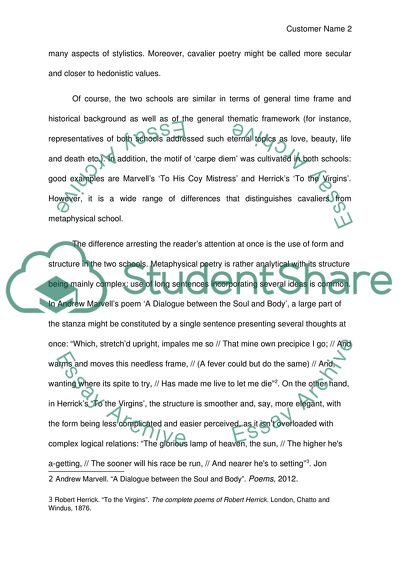Cite this document
(“Renaissance to Restoration - Compare & Contrast Metaphysical poems and Essay”, n.d.)
Retrieved from https://studentshare.org/literature/1696039-renaissance-to-restoration-compare-contrast-metaphysical-poems-and-cavaliar-poetry
Retrieved from https://studentshare.org/literature/1696039-renaissance-to-restoration-compare-contrast-metaphysical-poems-and-cavaliar-poetry
(Renaissance to Restoration - Compare & Contrast Metaphysical Poems and Essay)
https://studentshare.org/literature/1696039-renaissance-to-restoration-compare-contrast-metaphysical-poems-and-cavaliar-poetry.
https://studentshare.org/literature/1696039-renaissance-to-restoration-compare-contrast-metaphysical-poems-and-cavaliar-poetry.
“Renaissance to Restoration - Compare & Contrast Metaphysical Poems and Essay”, n.d. https://studentshare.org/literature/1696039-renaissance-to-restoration-compare-contrast-metaphysical-poems-and-cavaliar-poetry.


